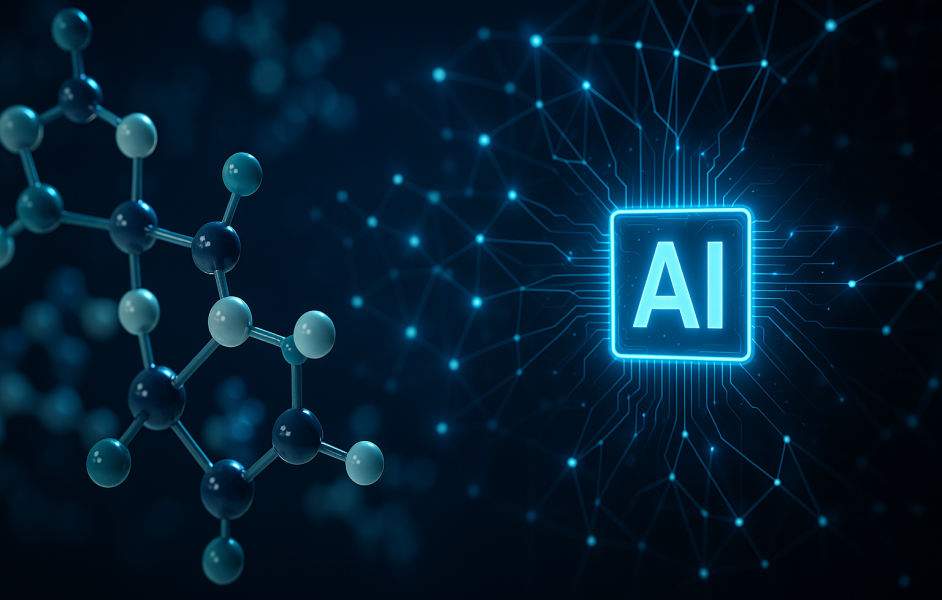<h2>Evogene Unveils Revolutionary AI Model for Small-Molecule Design</h2>
<p>On June 10, 2025, Evogene Ltd. announced a groundbreaking generative AI foundation model for small-molecule design, developed in partnership with Google Cloud. This innovative model marks a significant leap forward in the discovery of new compounds, answering a long-standing challenge in pharmaceuticals and agriculture—identifying novel molecules that fulfill multiple complex criteria simultaneously.</p>
<h3>Transforming Drug Discovery and Crop Protection</h3>
<p>The new model enhances Evogene’s ChemPass AI platform, aiming to expedite research and development (R&D) in drug discovery and crop protection. By optimizing factors such as efficacy, toxicity, and stability within a single design cycle, this development has the potential to reduce failures and accelerate timelines significantly.</p>
<h3>From Sequential Screening to Simultaneous Design</h3>
<p>Traditionally, researchers have followed a step-by-step approach, evaluating one factor at a time—first efficacy, then safety, and finally stability. This method not only prolongs the discovery process but also contributes to a staggering 90% failure rate for drug candidates before they reach the market. Evogene's generative AI changes this model, enabling multi-parameter optimization from the outset.</p>
<h3>How ChemPass AI Works: A Deep Dive</h3>
<p>At the core of the ChemPass AI platform lies an advanced foundation model trained on an extensive dataset of approximately 40 billion molecular structures. This curated database allows the AI to learn the "language" of molecules, leveraging Google Cloud’s Vertex AI infrastructure for supercomputing capabilities.</p>
<p>The model, known as ChemPass-GPT, employs a transformer neural network architecture—similar to popular natural language processing models. It interprets molecular structures as sequences of characters, enabling it to generate novel SMILES strings that represent chemically valid, drug-like structures.</p>
<h3>Overcoming Previous Limitations in AI Models</h3>
<p>The performance of ChemPass AI surpasses standard AI models, achieving up to 90% precision in generating novel molecules that meet all specified design criteria. This level of accuracy significantly reduces reliance on traditional models, which historically struggled with bias and redundancy.</p>
<h3>Multi-Objective Optimization: All Criteria at Once</h3>
<p>A standout feature of ChemPass AI is its capacity for simultaneous multi-objective optimization. Unlike traditional methods that optimize individual properties one at a time, this AI can account for various criteria—from potency to safety—thereby streamlining the design process.</p>
<h3>Integrating Multiple AI Techniques</h3>
<p>The generative model integrates different machine learning methodologies, including multi-task learning and reinforcement learning. By continuously adjusting its strategy based on multiple objectives, the model learns to navigate complex chemical spaces effectively.</p>
<h3>Advantages Over Traditional Methods</h3>
<ul>
<li><strong>Parallel Optimization:</strong> AI analyzes multiple characteristics simultaneously, enhancing the chances of success in later trials.</li>
<li><strong>Increased Chemical Diversity:</strong> ChemPass AI can generate unprecedented structures, bypassing the limitations of existing compound libraries.</li>
<li><strong>Speed and Efficiency:</strong> What would take human chemists a year can be accomplished in days with AI, expediting the discovery process.</li>
<li><strong>Comprehensive Knowledge Integration:</strong> The model incorporates vast amounts of chemical and biological data, improving design accuracy and effectiveness.</li>
</ul>
<h3>A Broader AI Strategy at Evogene</h3>
<p>While ChemPass AI leads the charge in small-molecule design, it is part of a larger suite of AI engines at Evogene, including MicroBoost AI for microbes and GeneRator AI for genetic elements. Together, they represent Evogene's commitment to revolutionizing product discovery across various life science applications.</p>
<h3>The Future of AI-Driven Discovery</h3>
<p>The launch of Evogene’s generative AI model signals a transformative shift in small-molecule discovery, allowing scientists to design compounds that achieve multiple goals—like potency and safety—in one step. As future iterations become available, customization options may expand, further enhancing their utility across various sectors, including pharmaceuticals and agriculture.</p>
<p>The effectiveness of these generative models in real-world applications will be vital for their impact. As AI-generated molecules undergo testing, the loop between computational design and experimental validation will create a robust feedback cycle, paving the way for breakthroughs in not just drugs and pesticides, but also materials and sustainability innovations.</p>This rewrite maintains the key information from the original article while enhancing SEO and readability through structured headlines and concise paragraphs.
Here are five FAQs with answers regarding the collaboration between Evogene and Google Cloud for their foundation model in generative molecule design:
FAQ 1: What is the foundation model for generative molecule design developed by Evogene and Google Cloud?
Answer: The foundation model is an advanced AI framework that leverages generative modeling techniques and machine learning to design and optimize molecules for various applications in life sciences. This model enables researchers to predict molecular behaviors and interactions, significantly accelerating the drug discovery and development process.
FAQ 2: How does this collaboration between Evogene and Google Cloud enhance drug discovery?
Answer: By utilizing Google Cloud’s computational power and scalable infrastructure, Evogene’s generative model can analyze vast datasets to identify promising molecular candidates. This partnership allows for faster simulations and analyses, helping to reduce the time and cost associated with traditional drug discovery methods while increasing the likelihood of successful outcomes.
FAQ 3: What potential applications does the generative model have in the life sciences?
Answer: The generative model can be used in various applications, including drug discovery, agricultural biotechnology, and the development of innovative therapeutic agents. It helps in designing novel compounds that can act on specific biological targets, leading to more effective treatments for a range of diseases.
FAQ 4: How does the use of AI in molecule design impact the future of life sciences?
Answer: AI-driven molecule design is poised to revolutionize the life sciences by enabling faster innovation and more precise targeting in drug development. With enhanced predictive capabilities, researchers can create tailored solutions that meet specific needs, ultimately leading to more effective therapies and improved health outcomes.
FAQ 5: What are the next steps for Evogene and Google Cloud following this announcement?
Answer: Following the unveiling of the foundation model, Evogene and Google Cloud plan to further refine their technologies through ongoing research and development. They aim to collaborate with various stakeholders in the life sciences sector to explore real-world applications and expand the model’s capabilities to address diverse challenges in drug discovery and molecular design.







